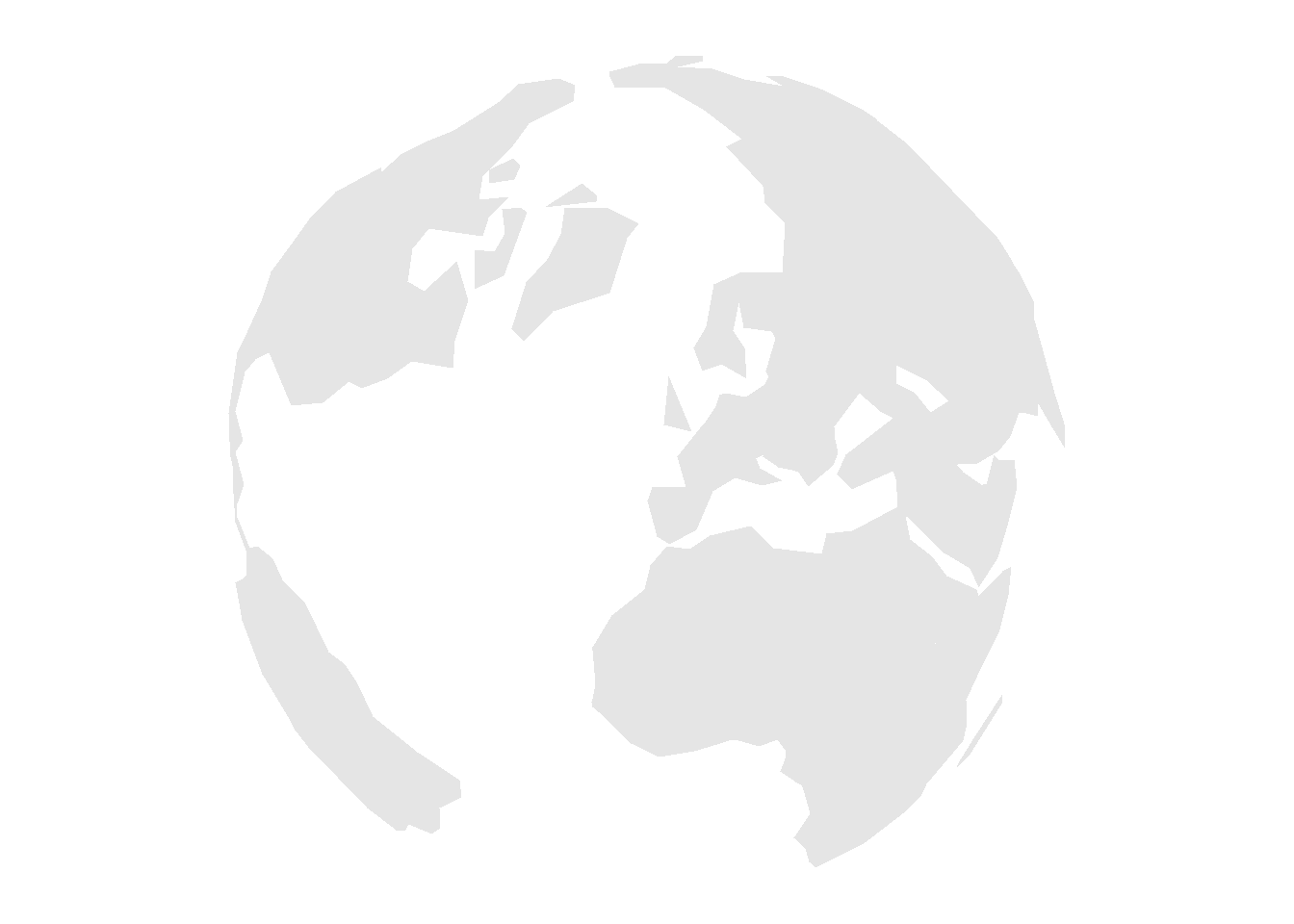Hello, world!
This website is new. I’ve been pondering on its creation for a while now. The start of the new year 2021 seems to be a good moment to finally launch it.
The website needs a nice “Hello, World!” article and a favicon. So why not combine both! As this here will be all about spatial data science and geovisualisation, I figured it would be rather fitting to use a map-themed icon and to create it in a reproducible way with R.
I use rnaturalearth to acquire country features, ggplot2 from tidyverse and sf for visualisation and rmapshaper to simplify the polygon according to the small size of the desired icon. ggpubr provides a simple way to use transparent backgrounds in ggplot2.
require(rnaturalearth)
require(tidyverse)
require(sf)
require(glue)
require(rmapshaper)
require(ggpubr)Here’s how I get the country features and simplify them:
countries <- ne_countries(returnclass = "sf") %>%
ms_simplify()For the globe shaped visualisation, I choose an orthographic projection with parameters that allow showing relatively much of the Earth’s landmass, including my current home base. (Sorry, New Zealand)!
lat <- 45
lon <- -10
ortho <- glue(
"+proj=ortho +lat_0={lat} +lon_0={lon} ",
"+x_0=0 +y_0=0 +a=6371000 +b=6371000 +units=m +no_defs"
)I plot it on a void canvas with a transparent background:
countries %>%
ggplot() +
geom_sf(col = NA) +
coord_sf(crs = ortho) +
theme_void() +
theme_transparent()
Now I can save the plot in various sizes according to the needs of different browsers. Note the use of cairo-png with the png graphics device. This enables antialiasing and results in smoother polygon edges of the scaled icon.
ggsave("favicon192.png", width = 2, height = 2, dpi = 96, bg = "transparent", type = "cairo-png")Voilà!
